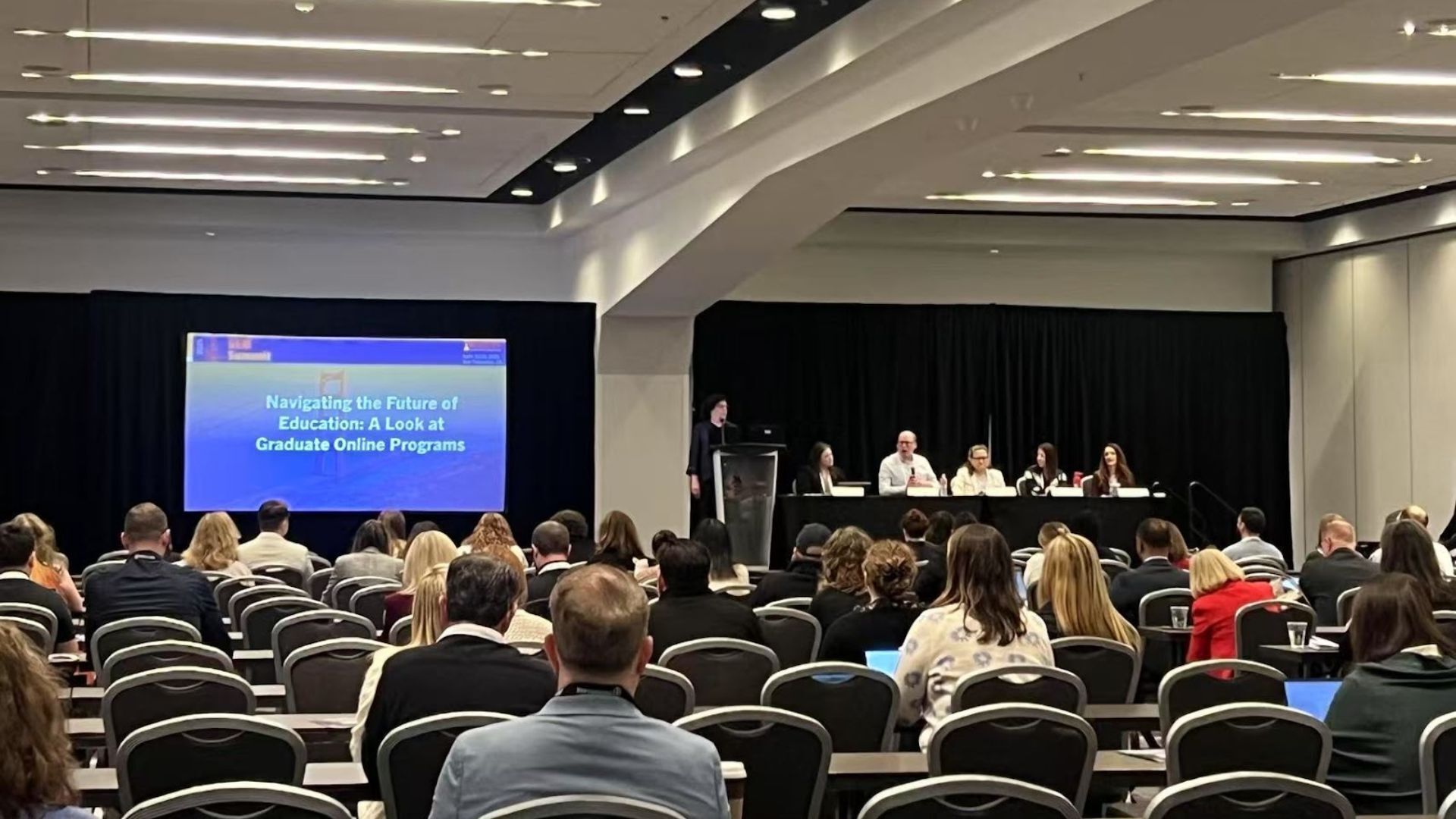Rethinking Recruitment: Strategic Solutions for 2025's Enrollment Decline
According to the Student and Exchange Visitor Information System (SEVIS), international student enrollment in the U.S. fell from 1,153,169 in March 2024 to 1,022,545 in March 2025 —a net loss of over 130,000 students, or 11.33%.
The most acute decline occurred after Spring 2024 graduation, and Fall 2024 enrollment failed to replenish the gap left by outgoing graduates. According to Chris Glass, professor of practice in higher education at Boston College and affiliated faculty, Center for International Higher Education (CIHE), this contraction is not merely a temporary fluctuation but suggests a broader structural shift rather than a cyclical enrollment pattern.
Beyond the number, the implications are far-reaching. For many colleges and universities, especially those with heavy reliance on full-tuition-paying international students, a double-digit enrollment decline represents not just a demographic challenge but a financial reckoning.
A more alarming fact is that this drop actually occurred ahead of the full impact of newly implemented policy changes under the second Trump administration, including expanded travel restrictions, increased scrutiny of F-1 visa holders and the trade war. As such, institutions may face even steeper losses in the coming academic year unless immediate steps are taken to mitigate attrition and restore international recruitment pipelines.

1. India and China: Twin Engines of U.S. Enrollment Now in Retreat
Indian and Chinese students have historically represented the largest segments of the international student population in the United States, collectively contributing significantly to the financial health of U.S. higher education institutions. According to the Open Doors 2024 report by the Institute of International Education (IIE), during the 2023–2024 academic year, Indian and Chinese students together accounted for approximately 54% of all international students in the U.S.
In terms of economic impact, these two groups have been instrumental. Data from NAFSA: Association of International Educators indicates that international students contributed $43.8 billion to the U.S. economy during the 2023–2024 academic year. While specific figures for Indian and Chinese students' contributions are not detailed in this report, their substantial representation suggests a significant share of this economic benefit.
The prominence of Indian and Chinese students in the U.S. Higher Education underscores their vital role not only in enriching academic diversity but also in sustaining the financial stability of educational institutions across the country. With the Trump administration reducing federal funding for higher education, revenue from international students became more critical than ever—particularly for institutions with lower rankings, limited name recognition, or smaller alumni donation bases. Recent trends, however, indicate a concerning downturn in enrollments from both countries, posing substantial economic challenges for universities nationwide.
1.1 - Indian Student Enrollment: A Sharp Decline
In 2024, visa officers reportedly adopted stricter criteria for assessing "nonimmigrant intent" and financial stability, leading to higher rejection rates. This result in the United States experiencing a notable 38% decrease in F-1 student visas issued to Indian nationals, with numbers falling from 103,495 in 2023 to 64,008 between January and September 2024 . This decline represents the most significant drop since the pandemic-affected year of 2020.
1.2 - Chinese Student Enrollment: Emerging Challenges
On the other hand, the recently escalated U.S.-China tensions have begun to impact chinese student mobility. China has issued advisories cautioning students about studying in the U.S., citing concerns over deteriorating bilateral relations. Concurrently, the U.S. has implemented measures scrutinizing Chinese students and scholars, further contributing to uncertainties.
These mutual escalations have triggered uncertainty among Chinese families and consulting agencies. Despite Chinese students contributing $14.3 billion to the U.S. economy in 2023, public sentiment and state messaging in China are beginning to discourage U.S.-bound academic plans. Industry insiders are observing a growing shift toward alternatives such as Canada, the U.K., and Australia, albeit these countries are also going through major immigration policy changes recently.
The simultaneous decline in Indian and Chinese student enrollments poses a significant threat to the financial stability of U.S. higher education institutions, many of which rely heavily on international tuition revenue. Addressing these challenges requires strategic policy adjustments and international outreach to restore confidence among prospective students from these key countries.
Meanwhile, rather than passively waiting for geopolitical tensions to ease or economic conditions to stabilize, institutions should view this moment as a catalyst for innovation. The current challenges, in fact, present a unique opportunity to reimagine how international education is structured, delivered, and sustained. Now is the time for bold thinking, not business as usual.
2. Rethinking International Enrollment Strategy
A prevailing misconception in the sector is the tendency to treat all international students as a homogenous group. In reality, international students are at different stages of their educational journey, each with distinct needs and priorities—creating corresponding opportunities for institutions to engage and support them in more targeted and strategic ways. In the year of 2025, rather than continuing to focus heavily on recruiting offshore students—which, as previously mentioned, presents significant challenges at the moment—institutions could better navigate the financial crisis ahead by prioritizing the retention of onshore students.
When we say “onshore students", we are referring to those who began their educational journey in the U.S. years ago—before the recent wave of political turbulence. This group has already made significant investments in the U.S. and is often reluctant to walk away from the "sunk costs" they’ve incurred over the years. They bring with them cultural familiarity, established social networks, and a strong desire to remain in the country and build their careers.
Tapping into this group of international students’ evolving needs resembles a “remarketing” strategy—re-engaging an existing audience with new, tailored offerings. In this context, institutions should consider designing programs specifically for onshore international students, who, at this stage of their U.S. journey, are often more focused on visa continuity, professional advancement, or career transitions.
This is where hybrid executive programs come into play. These programs offer a strategic solution that aligns institutional goals with student aspirations. For forward-thinking institutions, this shift presents a valuable opportunity for sustainable enrollment growth.
3. A Practical Innovation: Hybrid Executive Programs
Hybrid executive programs combine the rigor of graduate education with the flexibility required by working professionals and international students managing complex visa situations. These programs allow F-1 students to work while studying, typically through Curricular Practical Training (CPT), from their first semester. Students are required to attend scheduled on-site sessions—often once per semester—while completing the bulk of their coursework online. This structure ensures compliance with USCIS regulations while accommodating the realities of student employment and mobility.
Unlike traditional master’s programs, which assume students are new to the U.S. and in demand for full-time, in-person study, hybrid executive programs are designed with the experienced, visa-conscious student in mind. This format enables institutions to tap into a growing, under-recognized audience: OPT graduates without H-1B sponsorship, H-1B workers facing layoffs, and dependents seeking pathways into the workforce.
4. Market Data and Opportunity
In 2024, the H-1B visa lottery received over 470,000 applications. Only 120,603 registrants were selected. That leaves more than 350,000 eligible professionals unable to obtain a work visa—many of whom are recent international graduates on the F-1 visa, seeking legal ways to remain in the country and continually build on their career. Hybrid executive programs offer a compliant, career-aligned solution to this growing demand.
5. Implementation Blueprint
Launching a successful hybrid executive program requires more than a flexible class schedule. It demands a deep understanding of immigration law, curriculum design, and student lifecycle management. Key elements include:
- Curriculum Relevance: All coursework must directly align with the student’s job function and be integrated into the academic program.
- DSO Involvement: Designated School Officials play a critical role in authorizing and managing CPT, issuing I-20s, and ensuring students understand their responsibilities.
- Accreditation Compliance: Programs must balance online and in-person instruction to maintain hybrid classification under SEVP rules.
- Operational Flexibility: Campuses in metro areas, rolling admissions, and payment plans all improve accessibility and enrollment outcomes.
6. GoElite: Your Strategic Partner in Program Development
At GoElite, we specialize in helping institutions design, launch, and scale hybrid executive programs tailored to the international student market. We have built partnerships with over 20 universities across the United States—many of which have exclusive relationships with us for their hybrid professional programs. We provide end-to-end support in program design, SEVIS compliance, DSO training, and student acquisition.Our data-informed approach enables institutions to adapt with speed and confidence.
What sets us apart is our direct connection to the students universities seek to serve. We understand their timelines, their visa concerns, their job markets—and we help translate those insights into practical academic offerings that drive enrollment and retention.
7. A New Era of Enrollment Strategy
International student recruitment is entering a new era. The playbook that worked five or ten years ago no longer applies. Institutions that innovate and diversify their program offerings—particularly by embracing flexible, compliant, career-driven formats—will be best positioned to thrive.
Hybrid executive programs are not a workaround. They are a strategic investment in the future of American higher education.
You May Also Like
These Related Stories
-1.jpg)
The Recent Visa Battle and SEVIS Fallout: What Agents Need to Know to Recruit Safely in 2025

Navigating the Future of Graduate Enrollment: Key Insights from the 2025 NAGAP GEM Summit
-Sep-16-2025-10-26-44-1399-PM.jpg)
-1.jpg?width=600&height=1000&name=%E9%87%8E%E7%81%AB%E4%B8%8A%E5%B2%B8%E7%BE%A4%E4%BA%8C%E7%BB%B4%E7%A0%81%20(600%20x%201800%20px)-1.jpg)
No Comments Yet
Let us know what you think